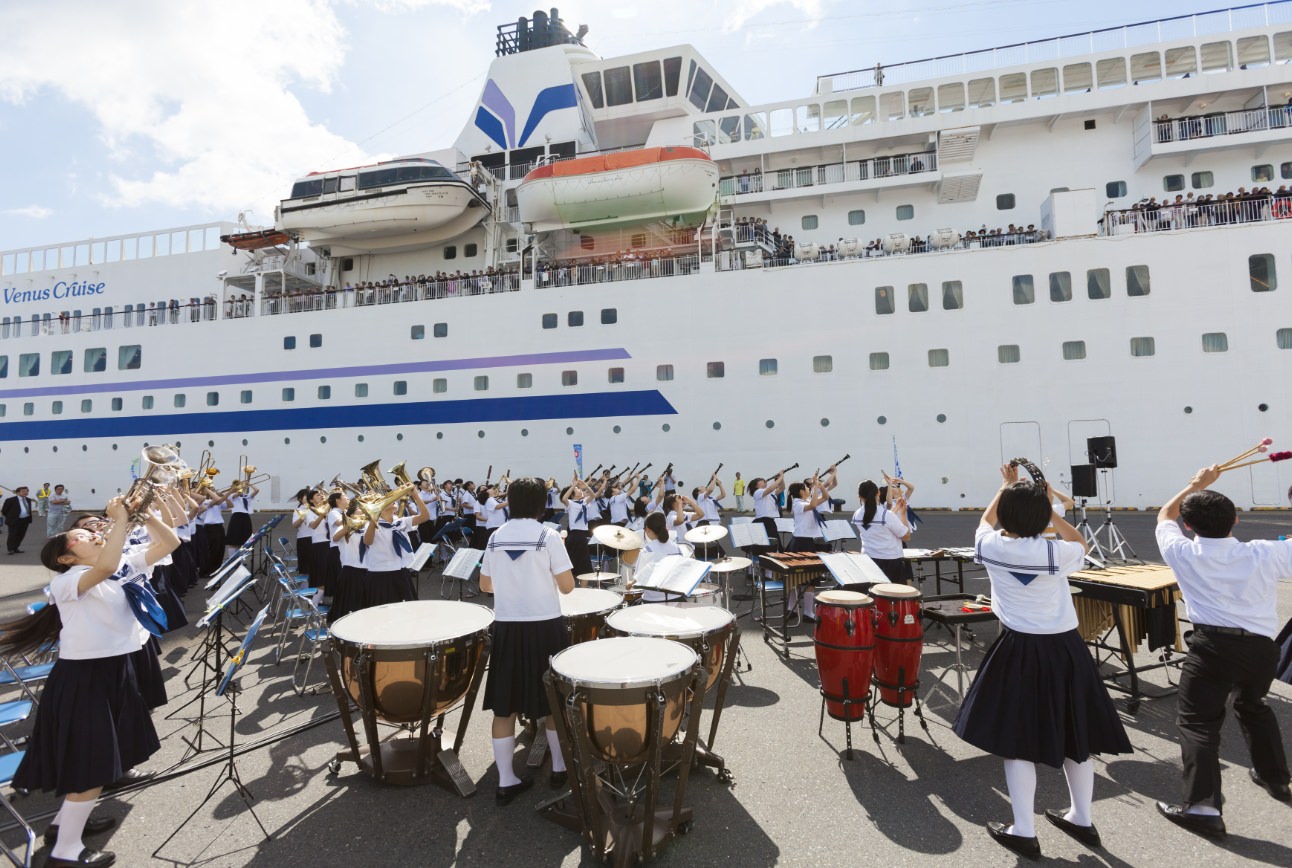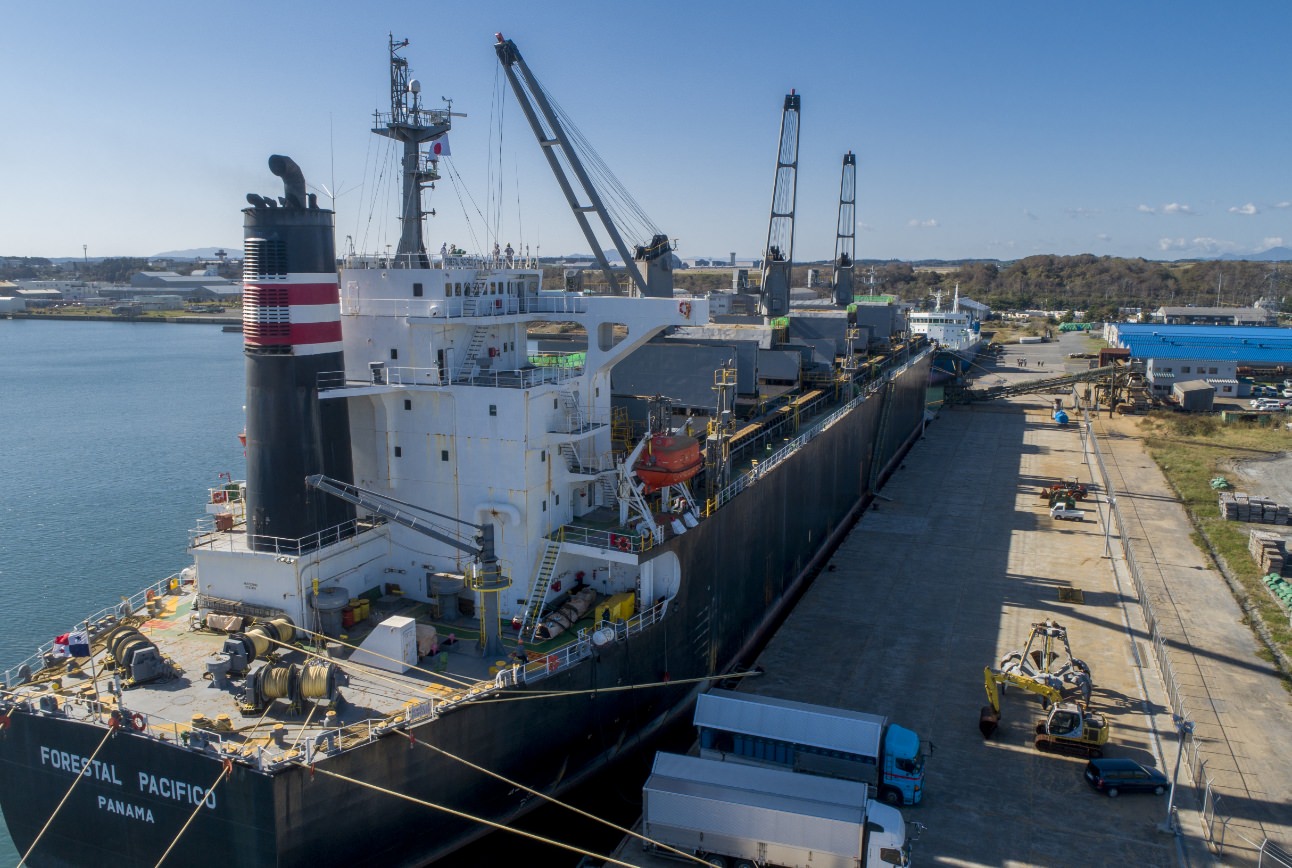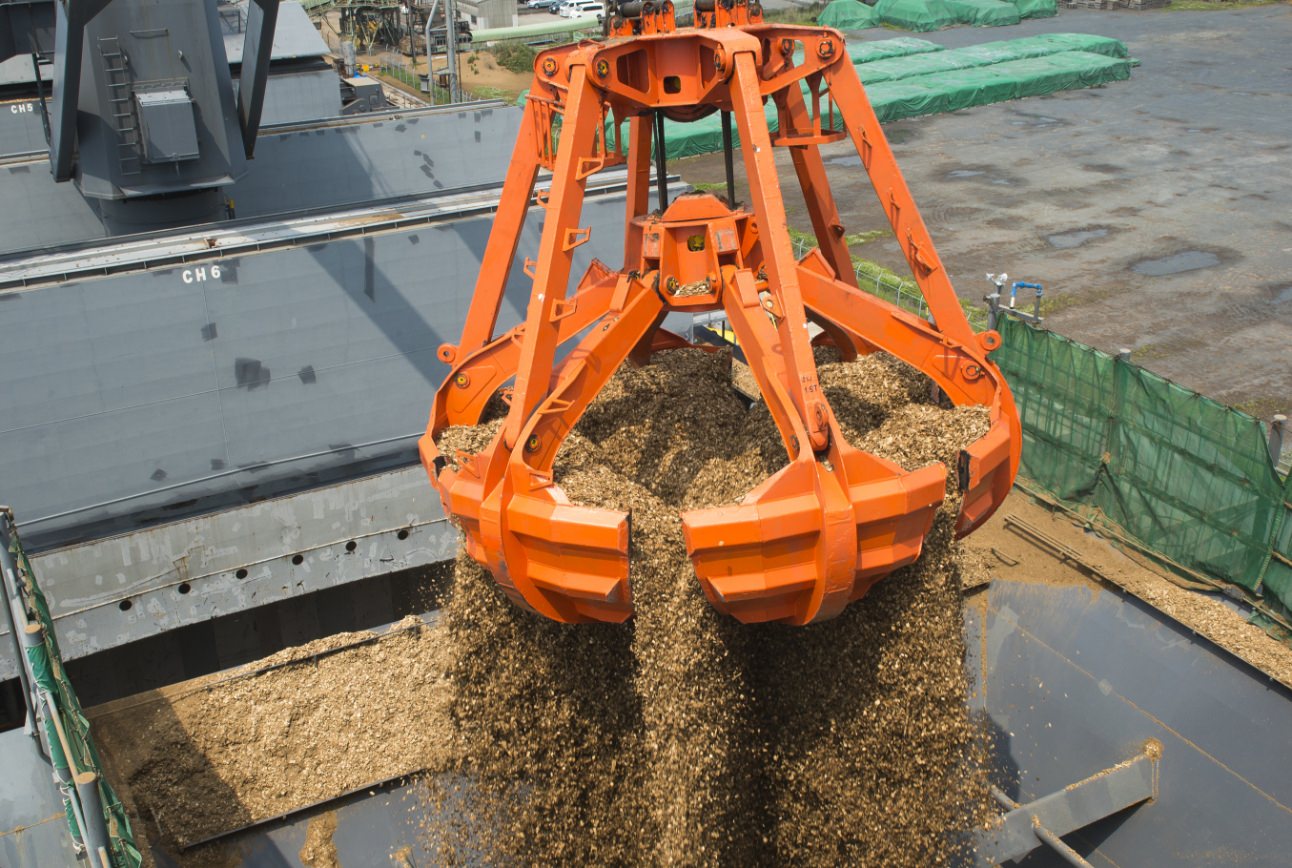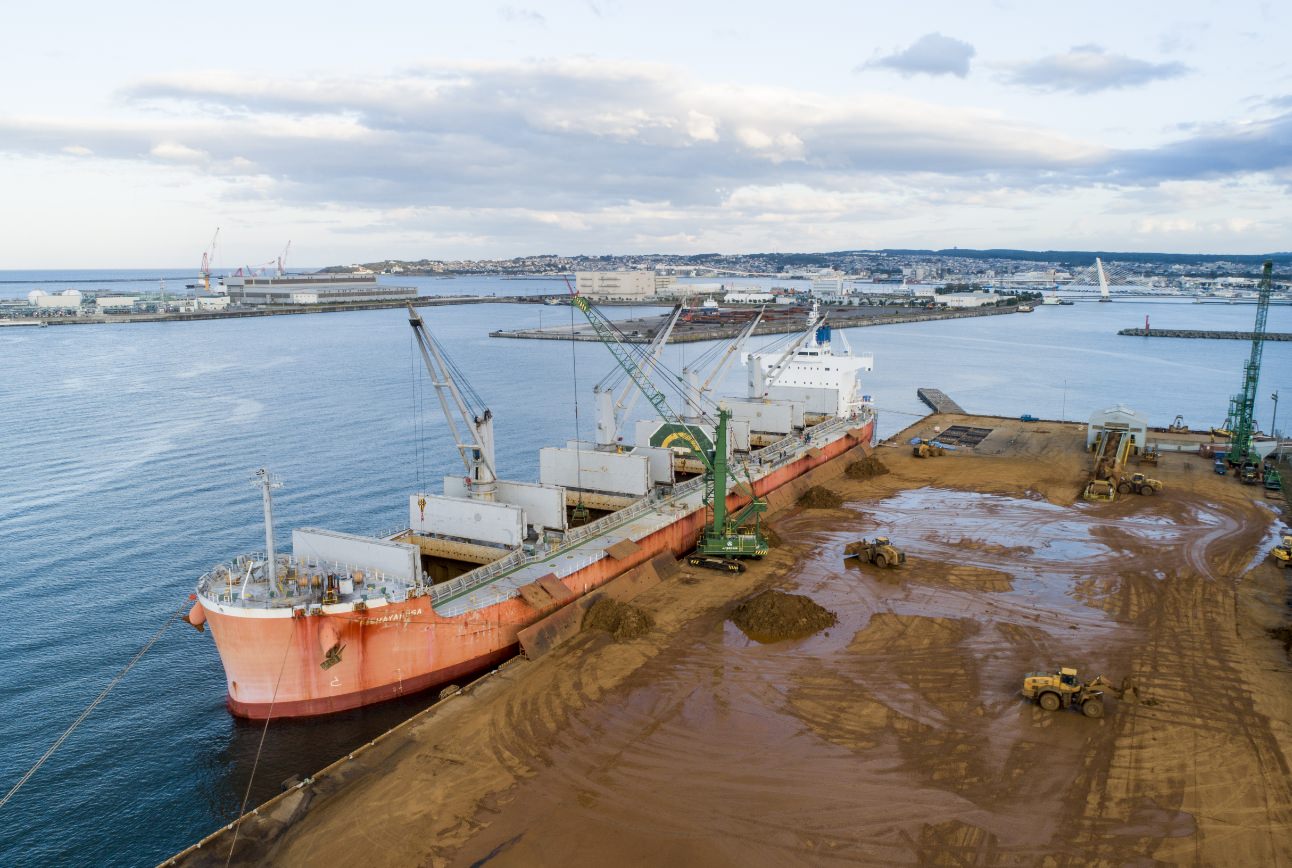
FACILITY STATUS Facility status
Extensive port facilities and industrial areas Well-developed port facilities and industrial districts
Industry
Blessed with rich marine and underground resources, Hachinohe has grown into one of the leading industrial cities in northern Japan, with many industrial complexes and logistics centers developed mainly in the coastal part. Several industrial parks have been completed also in inland areas with good transportation access, while new ones are now under construction.
Fishing port
Hachinohe boasts one of Japan’s largest volume of landings, most notably squid (of which the city is Japan’s largest producer) and mackerel. The fishing port’s fish markets are the first in Japan to be equipped with EU-HACCP certified facilities and are surrounded by many marine product processing plants, which are mainly situated in the back of them or in the adjacent marine product processing complex.
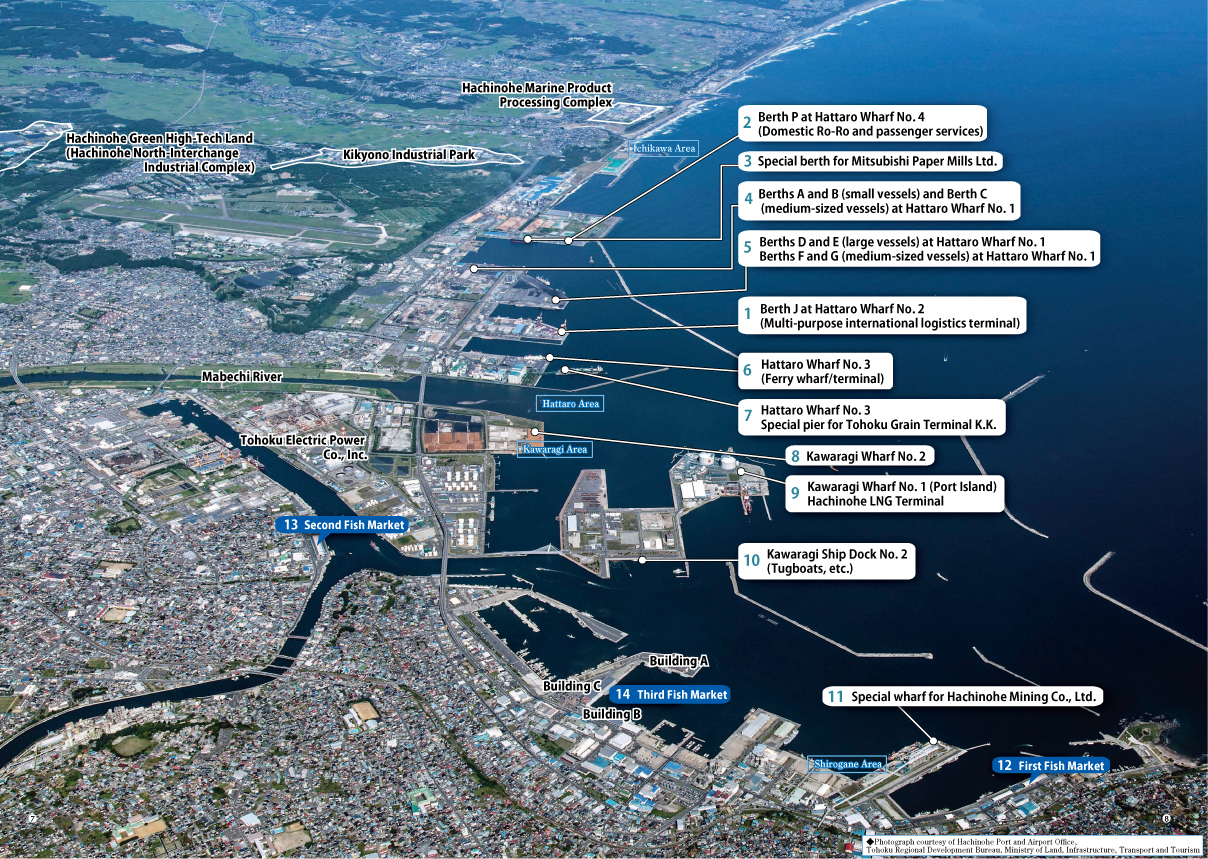
- ①Berth J at Hattaro Wharf No. 2 (multi-purpose international logistics terminal)
- ②Berth P at Hattaro Wharf No. 4 (domestic Ro-Ro and passenger services)
- ③Special berth for Mitsubishi Paper Mills Ltd.
- ④Berths A and B (small vessels) and Berth C (medium-sized vessels) at Hattaro Wharf No. 1
- ⑤Berths D and E (large vessels) and Berths F and G (medium-sized vessels) at Hattaro Wharf No. 1
- ⑥Hattaro Wharf No. 3 (Ferry wharf/terminal)
- ⑦Special pier for Tohoku Grain Terminal K.K. at Hattaro Wharf No. 3
- ⑧Kawaragi Wharf No. 2
- ⑨Hachinohe LNG Terminal at Kawaragi Wharf No. 1 (Port Island)
- ⑩Kawaragi Ship Dock No. 2 (Tugboats, etc.)
- ⑪Special berth for Hachinohe Mining Co., Ltd.
- ⑫First Fish Market
- ⑬Cargo Sorting Building D at the Second Fish Market
- ⑭Cargo Sorting Buildings A, B and C at the Third Fish Market
●Tonnage of ship (DW or GT)
●Water depth (m)
●Extension (m)
-
①Berth J at Hattaro Wharf No. 2 (multi-purpose international logistics terminal)
-
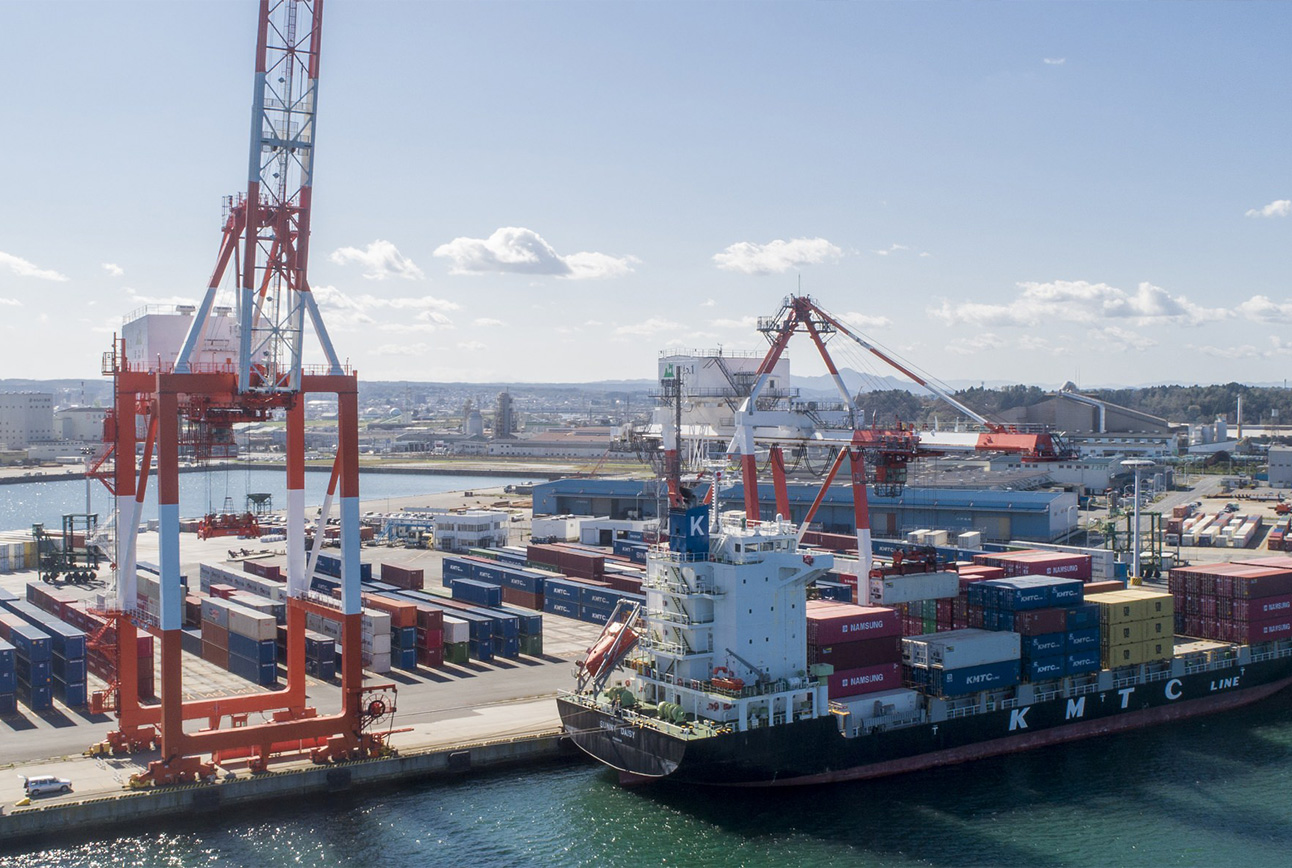
Making full use of the area of 85,000 m2, this terminal functions as an important channel for imports and exports. This 50,000-ton container berth is equipped with not only fumigation facilities, but also 107 reefer plugs (440 V).
-
-
②Berth P at Hattaro Wharf No. 4 (domestic Ro-Ro and passenger services)
●30,000 DW ●-12 m ●240 m
This berth is mainly used to handle cargo for domestic service vessels. Hachinohe Port offers three regular Ro-Ro services, connecting it to Kawasaki, Nagoya, and Tokyo (southbound only). These Ro-Ro ships, which carry trucks and chassis loaded with cargo, mainly transport completed automobiles on the Kawasaki and Nagoya routes and paper products on the Tokyo route (southbound only). Moreover,cruise ships occasionally moor at this quay too.
Route name Shipping company No. of services
(days of the week)Kawasaki
routePrince Kaiun Co., Ltd. 2 services a week
(Tue/Thu)Nagoya
routeFUJITRANS CORPORATION 1 service every 4 days Tokyo
routeOcean Trans Co., Ltd.
Kuribayashi Steamship Co., Ltd.1 service a week
(Mon)*Ro-Ro ship: Roll-on/roll-off ship
A Ro-Ro ship is a vessel that is equipped with a ramp that can be used to bridge the gap between the wharf, and it allows vehicles loaded with cargo to enter its hold to facilitate the efficient loading and unloading of cargo. -
-
③Special berth for Mitsubishi Paper Mills Ltd.
●50,000 DW ●-12 m ●202 m
●15,000 DW ●-10 m ●180 mThe port has a special berth for Mitsubishi Paper Mills Ltd. to facilitate the handling of vessels carrying wood chips, a paper ingredient.
The berth is mainly used to load and unload wood chips imported from Australia and South America. -
-
④Berths A and B (small vessels) and Berth C (medium-sized vessels) at Hattaro Wharf No. 1
-

Berths A and B at Hattaro Wharf No. 1 (small vessels)
●5,000 DW ●-7.5 m ●130 mBerth C at Hattaro Wharf No. 1 (medium-sized vessels)
●15,000 DW ●-10 m ●185 mBerths A and B allow small vessels to berth for the loading and unloading of cargo, while Berth C allows medium-sized vessels to berth. As extensive cargo-handling services are provided nearby, the loading and unloading can be carried out quickly and easily.
-
-
⑤Berths D and E (large vessels) and Berths F and G (medium-sized vessels) at Hattaro Wharf No. 1
-
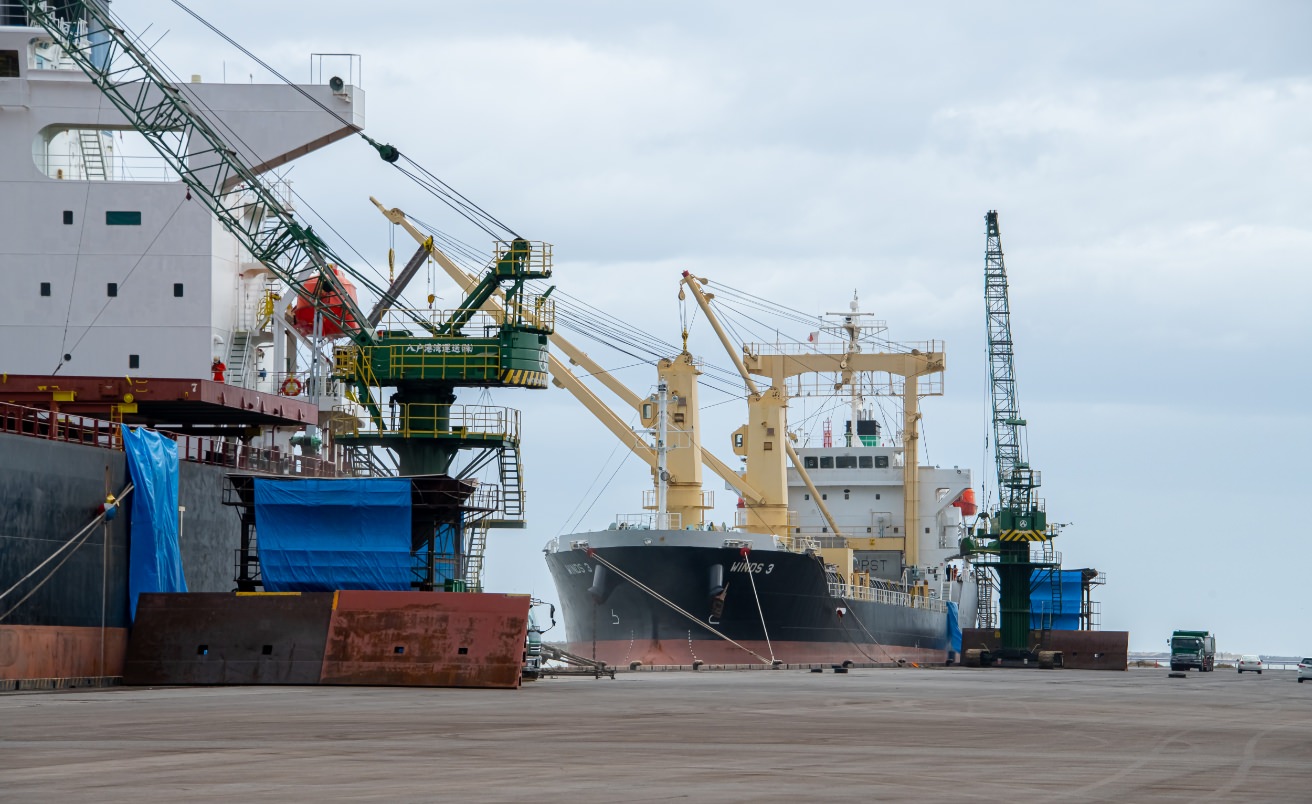
Berths D and E at Hattaro Wharf No. 1 (large vessels)
●50,000 DW ●-13 m ●270 mBerths F and G at Hattaro Wharf No. 1 (medium-sized vessels)
●15,000 DW ●-10 m ●185 mBerths D and E allow megacarriers to berth. As there is also a road for trucks, large amounts of cargo can be loaded and unloaded. Berths F and G cater to medium-sized vessels.
-
-
⑥Hattaro Wharf No. 3 (Ferry wharf/terminal)
●10,000 GT ●-7.5 m ●165 m
●10,000 GT ●-7.5 m ●180 m-
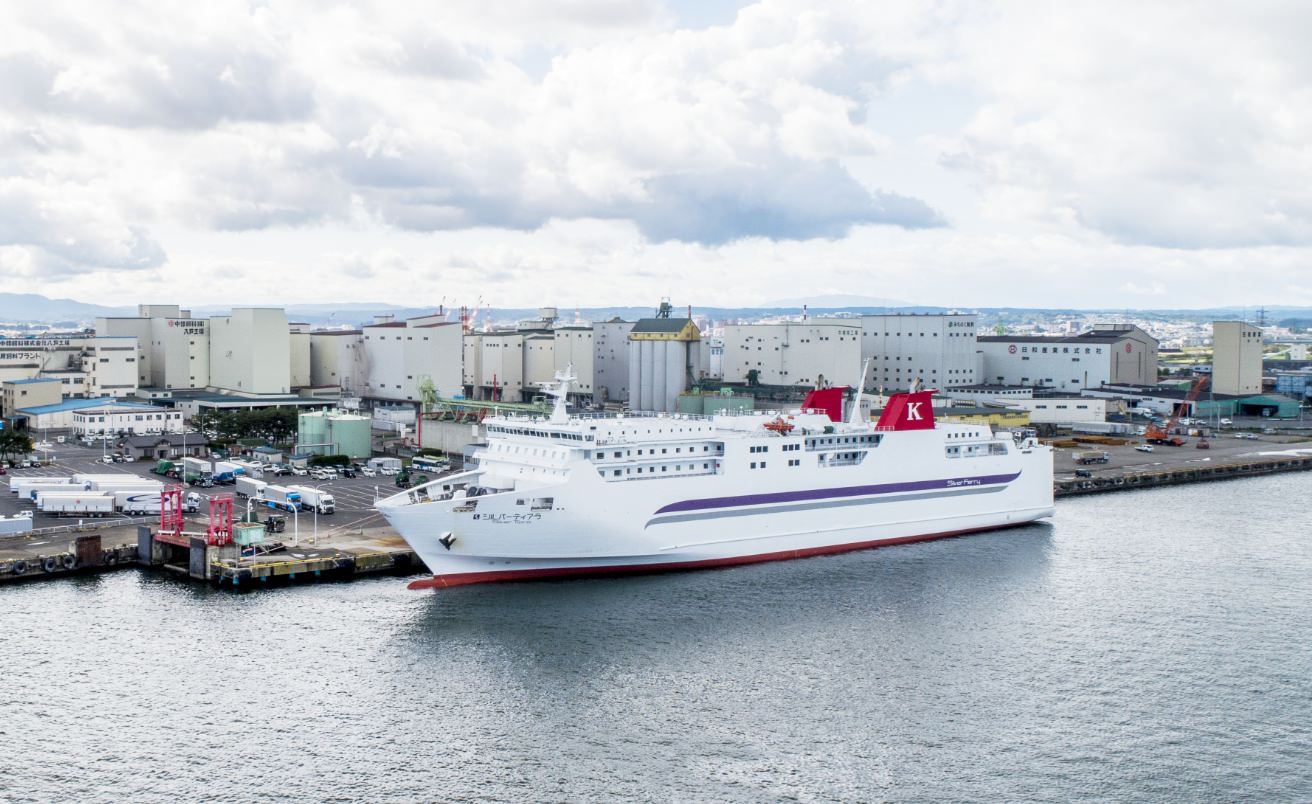
The ferry services connecting Honshu and Hokkaido operate four times a day between Hachinohe and Tomakomai. These ferries have always provided safe, comfortable, and convenient services ever since the routes were launched in 1973. A second berth was put into operation in April 2017, allowing two vessels to berth simultaneously.
In addition to passengers and cargo, the wharf can also be used for the transportation of Self-Defense Forces vehicles, emergency supplies, and the like in the event of a large-scale earthquake.
-
-
⑦Special pier for Tohoku Grain Terminal K.K. at Hattaro Wharf No. 3
●65,000 DW ●-13 m ●311 m
-
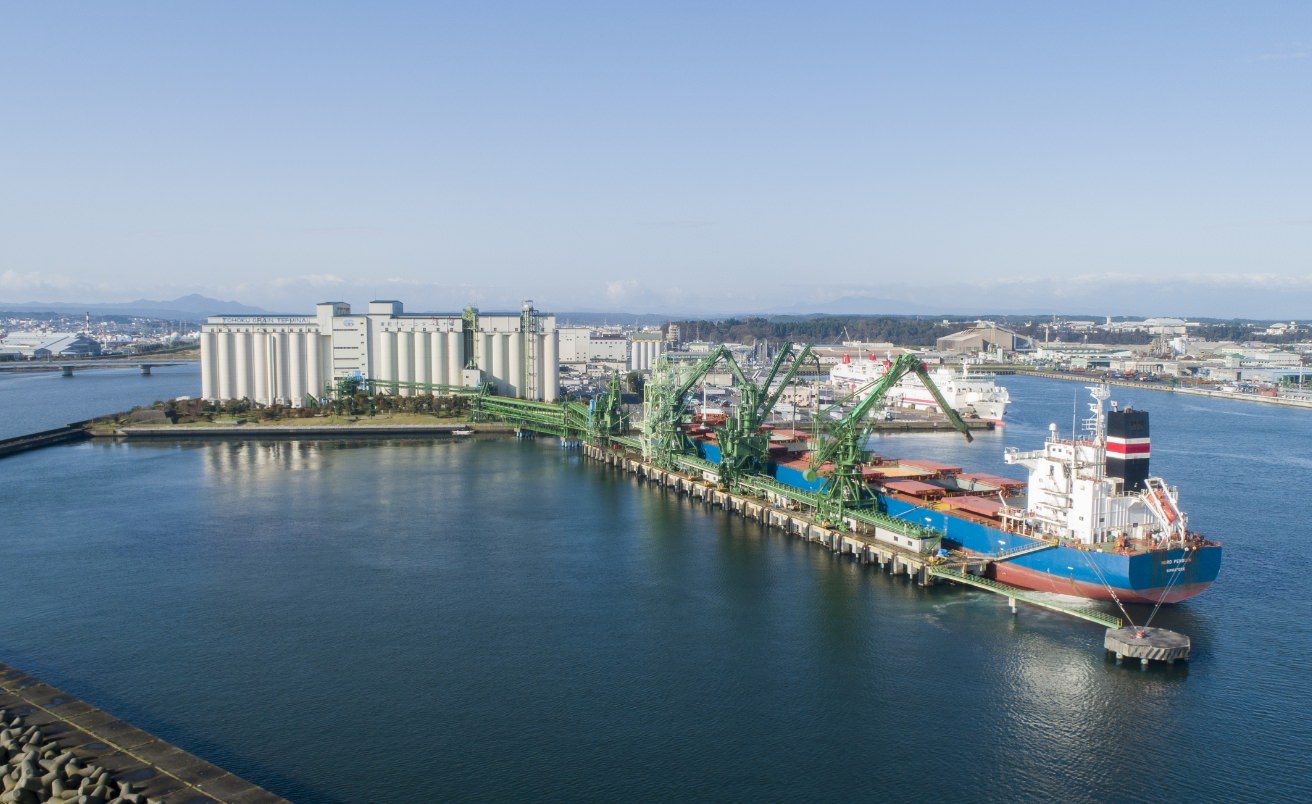
The wharf features silos where the core company of Japan’s third largest feed grain complex handles about 1.4 million tons of feed ingredients each year.
Capable of handling massive (Panamax) grain carriers from the US, South America and other parts of the world, the wharf can store up to 170,000 tons of grain in the 161 gigantic silos.
-
-
⑧Kawaragi Wharf No. 2
●50,000 DW ●-14 m ●280 m
Designed to allow large ocean-going vessels to berth easily, this wharf mainly handles the loading and unloading of cargo for Pacific Metals Co., Ltd., such as the nickel ore and limestone used to produce ferronickel.
*Ferronickel is a key component in the production of stainless steel. -
-
⑨Hachinohe LNG Terminal at Kawaragi Wharf No. 1 (Port Island)
●102,471 DW ●-14.5 m ●501.7 m
●2,200 DW ●-9.5 m ●158.0 m-
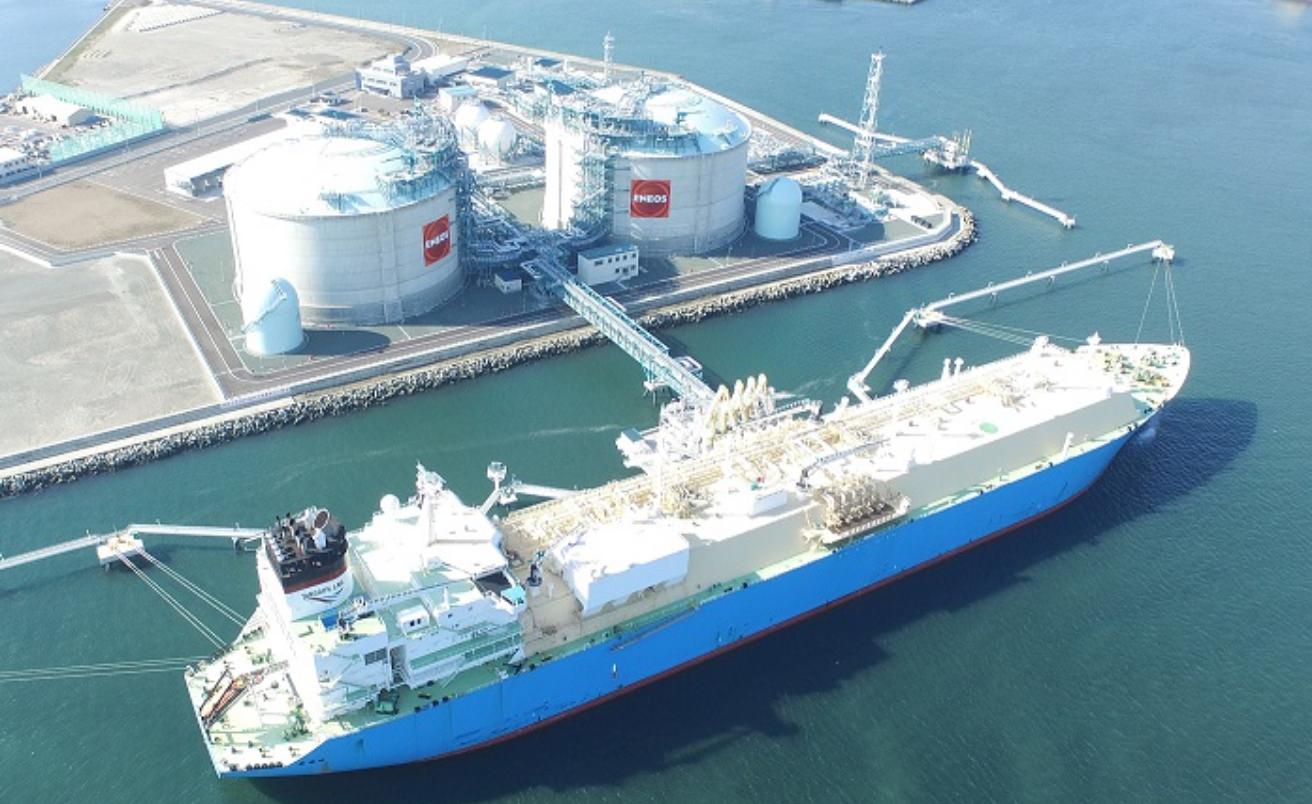
One of the largest LNG import bases in Tohoku, this terminal is equipped with sufficient shipping facilities to allow two 140,000-KL LNG tanks and 12 tanker trucks to be loaded simultaneously. ENEOS LNG Service Co., Ltd., which runs the base, supplies natural gas and LNG to Tohoku and the eastern part of Hokkaido.
The pier for ocean-going LNG carriers of 100,000 tons or more has the largest water depth in Hachinohe Port at 14.5 m, so it can cater to large tankers.
-
-
⑩Kawaragi Ship Dock No. 2 (Tugboats, etc.)
-
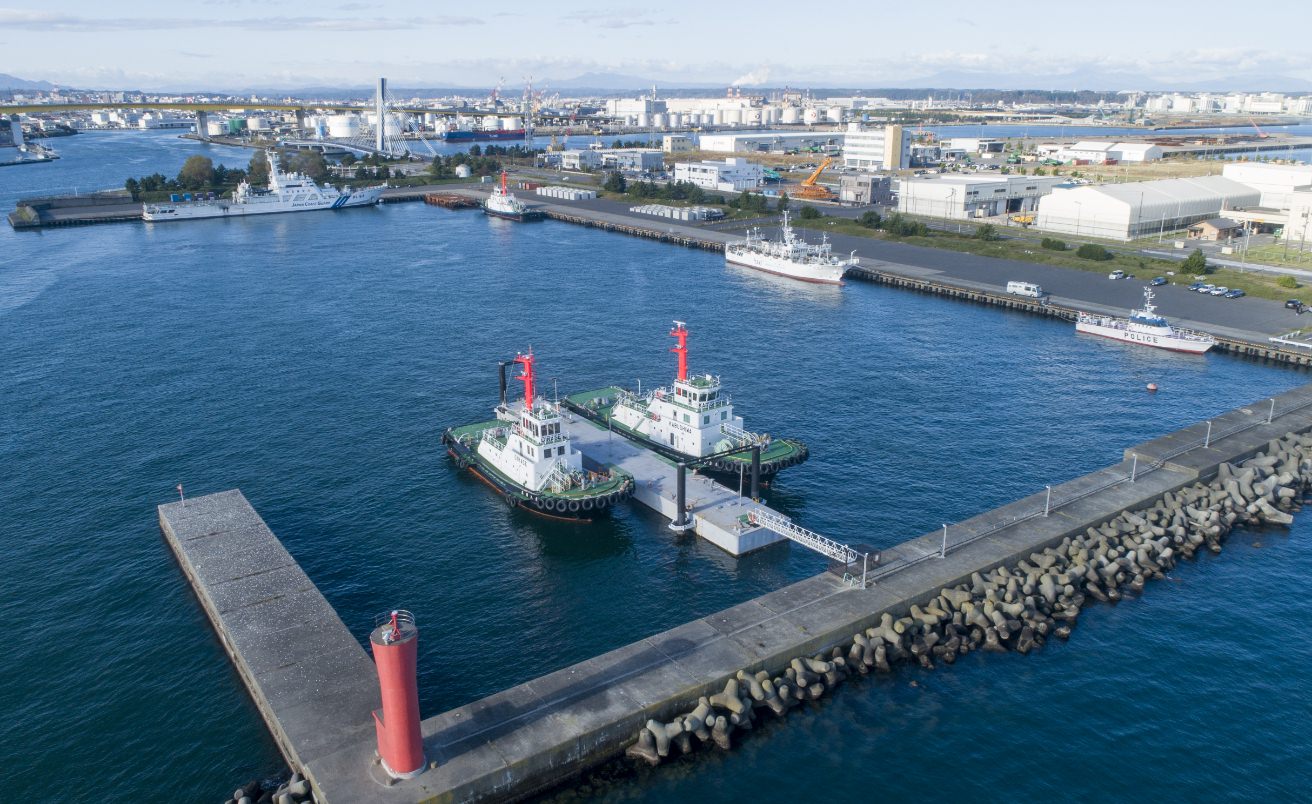
This dock is used by tugboats that help inward and outward bound vessels using Hachinohe Port to reach and leave the shore as well as for towing and tender boat operations. A floating pier was constructed here after the Great East Japan Earthquake.
In addition, marine police ships, Japan Coast Guard patrol vessels, and other such vessels dock here, as well.
-
-
⑪Special berth for Hachinohe Mining Co., Ltd.
●20,000 DW ●-11 m ●285 m
-
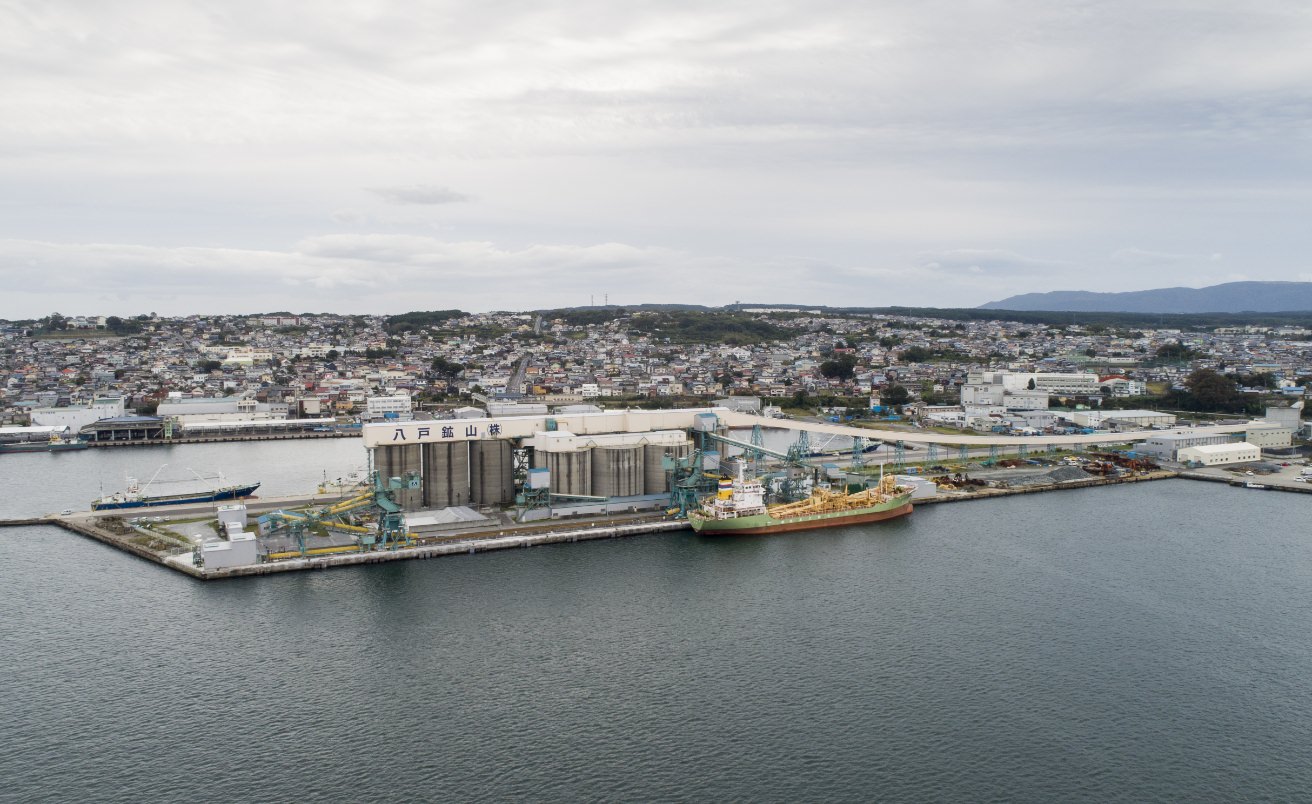
Located in the Matsudate Area of Hachinohe City, Hachinohe Mining Co., Ltd. transports limestone mined from its Hachinohe Limestone Mine to silos located about 8.5 km away in its designated special berth in the Shirogane Area via a long-distance underground belt conveyor.
From here, the limestone is shipped by sea to the East Nippon Works Kashima Area of the NIPPON STEEL CORPORATION in Ibaraki Prefecture as an auxiliary material for steel manufacturing (for sintering) and to the Tohoku and Kanto regions as an aggregate for fresh concrete.
-
-
⑫First Fish Market
The birthplace of the fishing industry in Hachinohe.
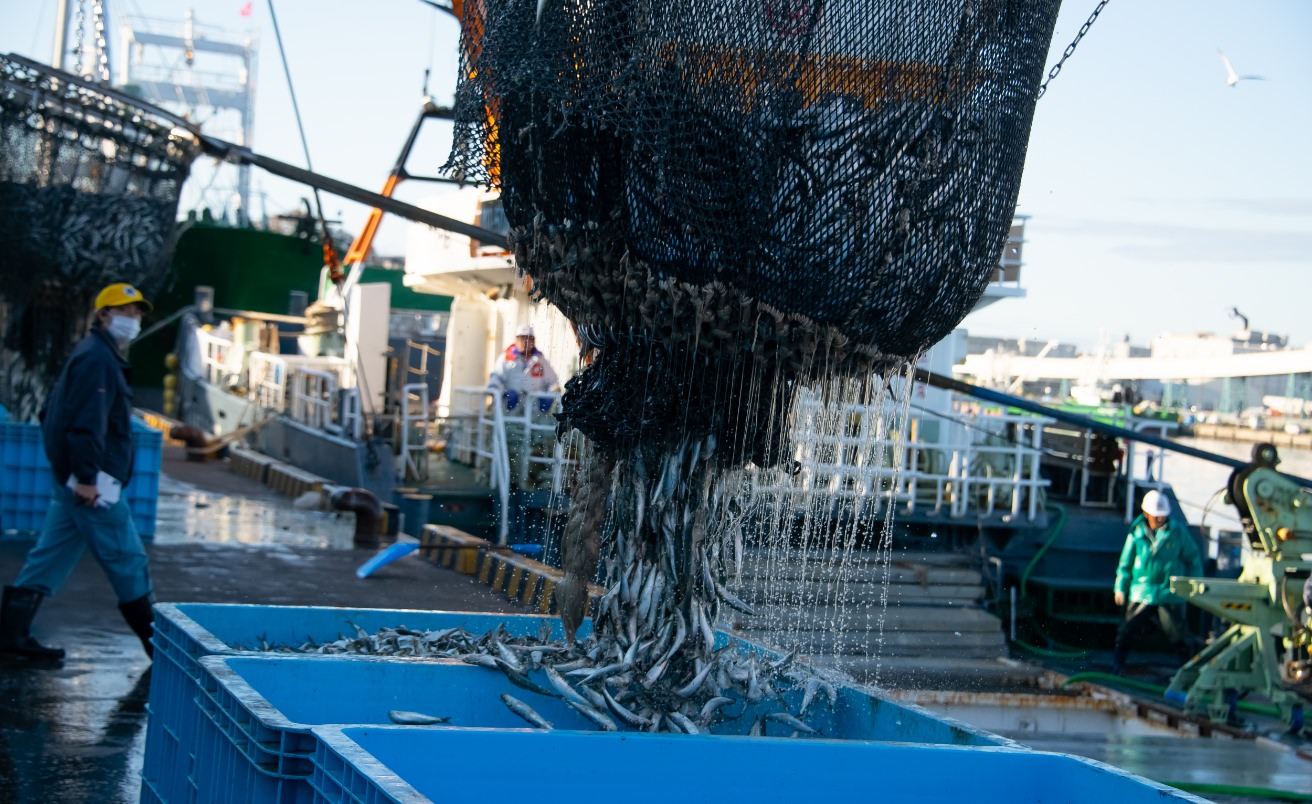
-
⑬Cargo Sorting Building D at the Second Fish Market
Entered service in 2021.

-
⑭Cargo Sorting Buildings A, B and C at the Third Fish Market
Building A at the Third Fish Market has been in operation since October 2012 as a facility that meets the standards for exports to the EU due to, for example, the introduction of HACCP-based hygiene controls (HACCP is a systematic preventive approach to food safety that is used in production processes from the receipt of ingredients to the shipping of products). The fish are pumped into the facility directly from the fishing vessels and then iced and boxed via fish transportation conveyors. (As the whole series of processes within the facility is automated, the fish do not come into contact with people.)
Building A was EU-listed in March 2015 (making it the only EU-listed landing market in Japan), and the third factory operated by Takewa Suisan Co., Ltd. was EU-certified in February 2016. Further exports to the EU are anticipated in the future.
Furthermore, Buildings B and C at the Third Fish Market are not only designed to be enclosed buildings, but also equipped with hooded belt conveyers and other measures to ensure an even safer and more secure supply of marine products.-
Building A
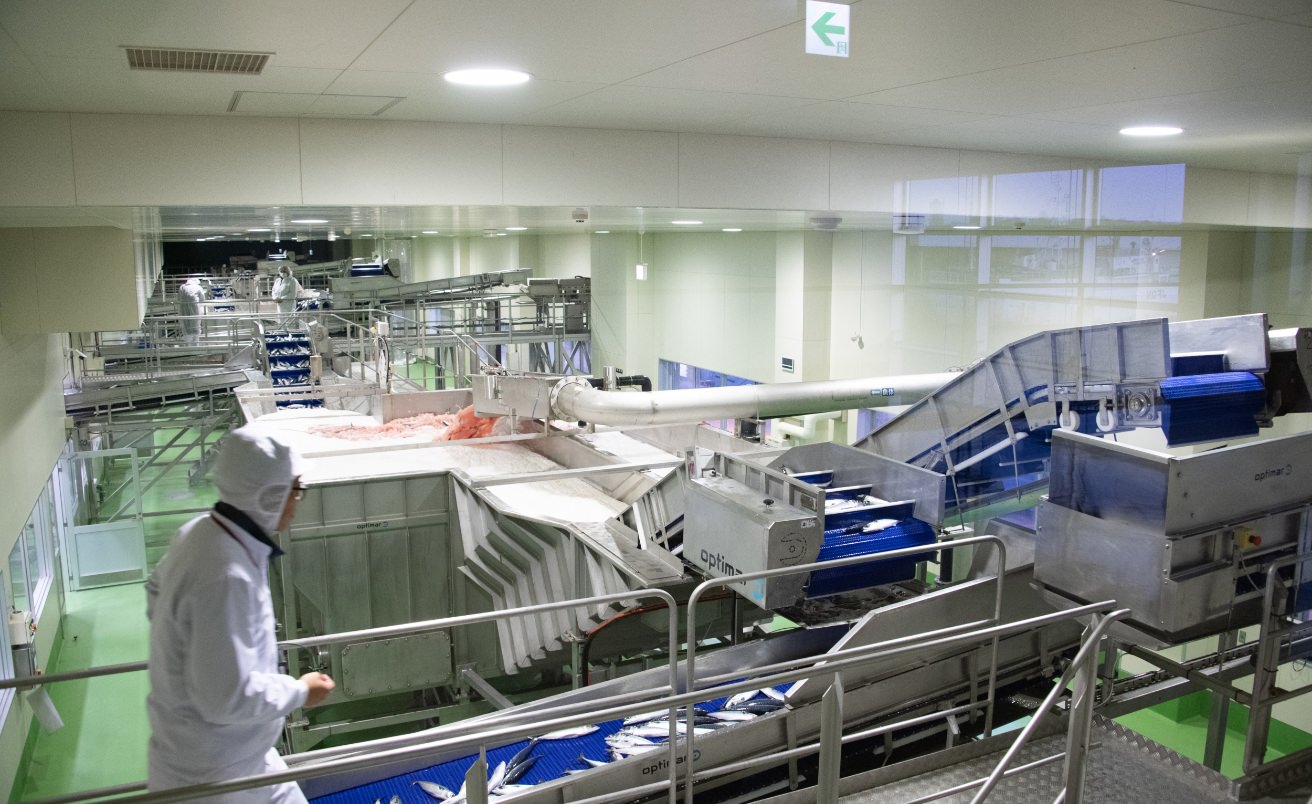
A HACCP certified facility, used mainly to sort fresh mackerel from purse-seine fishing vessels.
-
Building B
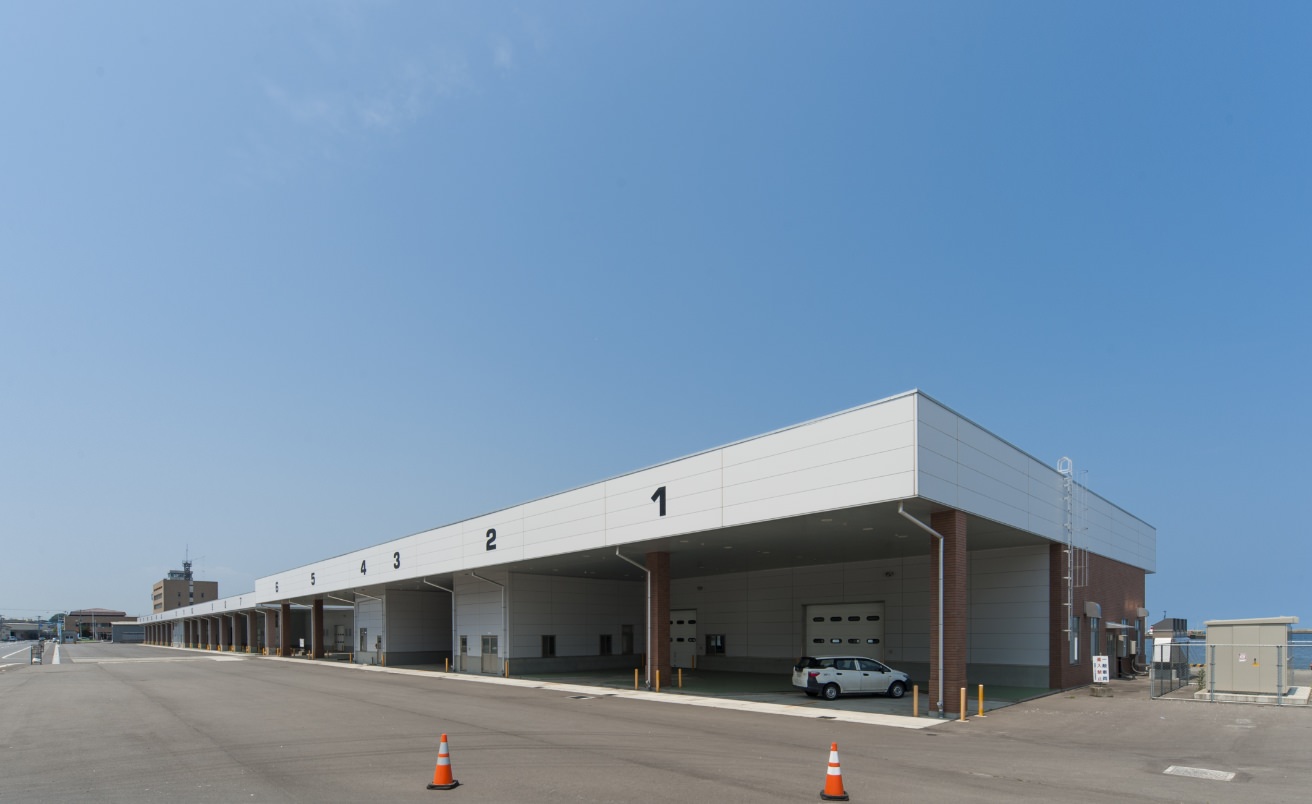
Used mainly to sort frozen squid (Japanese flying squid and neon flying squid) from medium-sized squid-fishing vessels and fresh Japanese flying squid from small squid-fishing vessels.
-
Building C

Used mainly to sort frozen squid from medium-sized to large squid-fishing vessels and frozen mackerels from purse-seine fishing vessels.
-


